Suborder Serpentes Subfamily Viperinae Phylum Chordata Rank Species | Subphylum Vertebrata Scientific name Proatheris superciliaris Higher classification Proatheris Order Scaled reptiles | |
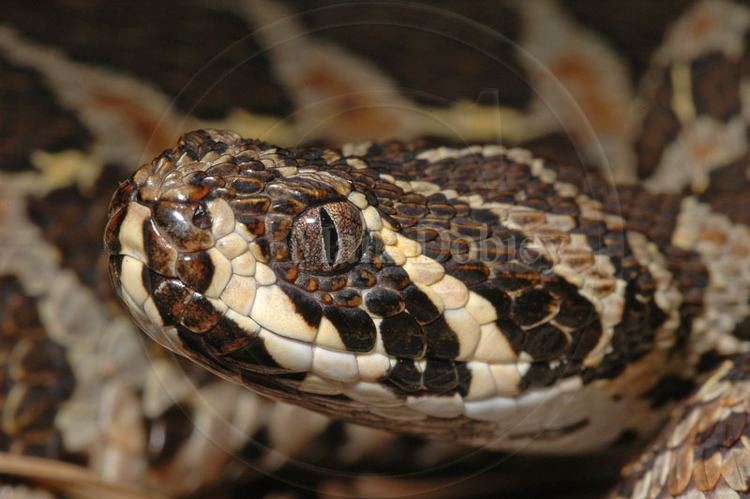 | ||
Genus ProatherisBroadley, 1996 Similar Adenorhinos, Eristicophis, Daboia, Causinae, Pseudocerastes | ||
Proatheris superciliaris feeding
Proatheris is a monotypic genus created for the venomous viper species, Proatheris superciliaris. This is a small terrestrial species endemic to East Africa. No subspecies are currently recognized.
Contents
- Proatheris superciliaris feeding
- Description
- Common names
- Geographic range
- Habitat
- Behavior
- Feeding
- Reproduction
- Venom
- Taxonomy
- Etymology
- References
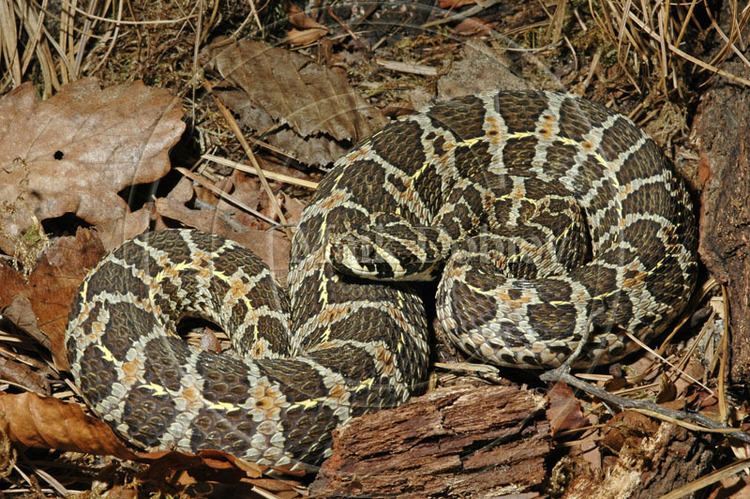
Description
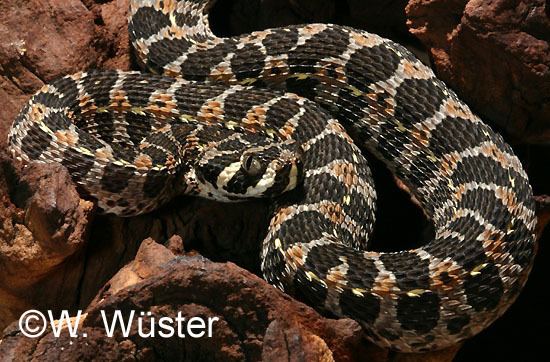
P. superciliaris is a small species that averages 40 to 50 cm (about 16 to 20 inches) in total length (body + tail), with a maximum total length of 61 cm (24 in). The females are slightly larger than the males. The head has a somewhat elongated appearance, the top of which is covered with small scales except for a pair of large supraocular scales, which are almost twice as long as they are wide.
Common names
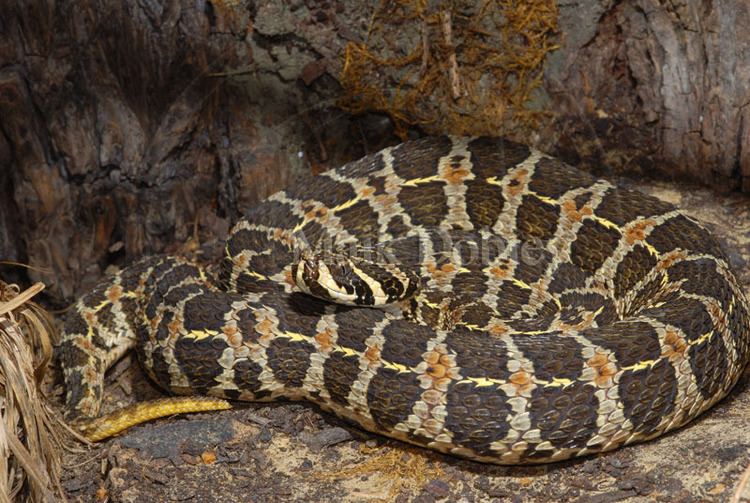
Lowland viper, swamp viper, lowland swamp viper, eyebrow viper, swamp adder, Peter's viper, flood-plain viper, Mozambique viper, African lowland viper, domino viper.
Geographic range
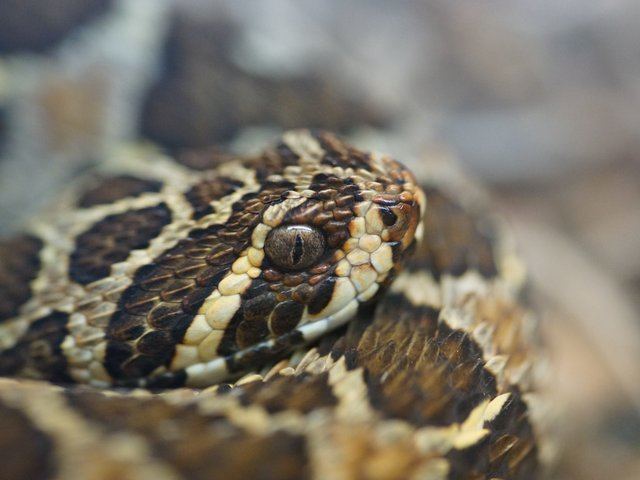
It is found in East Africa. The southern part of its range begins near Beira, in central Mozambique, extends up north over the Mozambique Plain to Quissanga, and through Malawi and as far north as the floodplains of southern Tanzania at the northern end of Lake Malawi.
The type locality given is "Terra Querimba" (= Quissanga mainland opposite Ilha Quirimba, Mozambique).
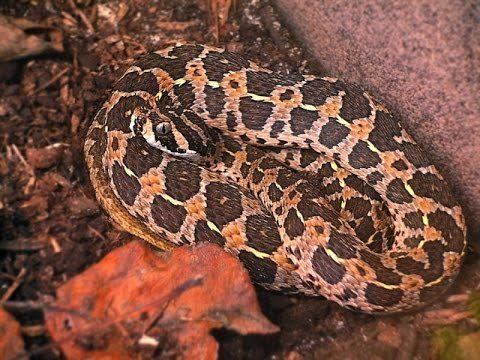
Its range is apparently centered on the lower section of the Zambezi River and spreads out into the coastal plain of central Mozambique and the Shire Valley to Lake Chilwa and Malawi. However, other specimens have been found far from this region, such as in Cape Delgado Province, in north-eastern Mozambique, and Mwaya in south-western Tanzania.
Habitat
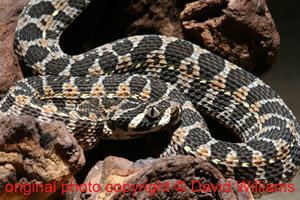
It is almost always found in low-lying marshes, floodplains and land frequently used for grazing cattle. The soil is never too dry, since this would make it difficult for the rodents that they feed on to dig their burrows. These snakes are entirely terrestrial and are usually found in or around these rodent burrows.
Behavior
One of the distinguishing characteristics of the Atheris group (to which Proatheris is closely related), is that they have prehensile tails. With Proatheris, the young and subadults have this capability, but it is diminished in the adults.
Feeding
Preys mainly on small frogs and toads. Occasionally, it also feeds on small rodents.
Reproduction
This species is viviparous, with typically 3-16 neonates.
Venom
The first known case of a survivor of snakebite by this species was reported by Els (1988), involving a 20 cm (7.9 in) juvenile and 24-year-old victim penetrated by a single fang. The results were painful, but there were none of the strongly hemotoxic symptoms that had been associated with Atheris venom up to that point.
In a second case in 1996, a victim experienced severe hemolysis and complete platelet destruction after which his liver and kidneys began to fail. When it was feared that the patient might die from hemolytic-uremic syndrome, plasmapheresis was performed. Luckily, the patient survived, but it is now obvious that P. superciliaris venom is very hemotoxic.
Taxonomy
This species was previously placed in the genus Atheris based on skull characteristics and because of its partially prehensile tail.
Etymology
The generic name, Proatheris, is Latin for "before-atheris".
